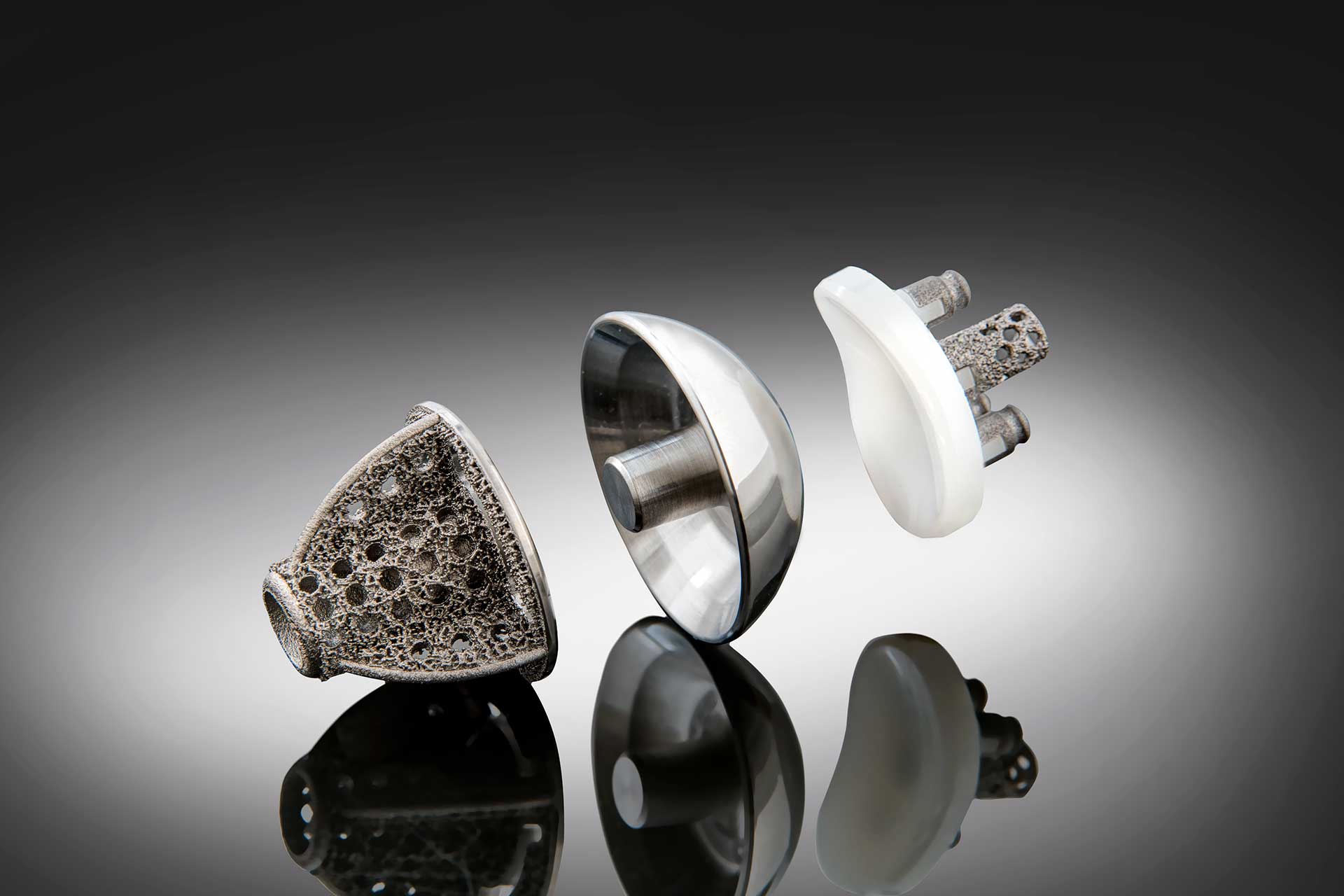Medical device manufacturing firm Exactech is transitioning the manufacturing process of its Equinoxe Stemless Shoulder to laser-based additive manufacturing.
The Stemless Shoulder, a bone-conserving anatomic total shoulder prosthesis released in 2018, previously used electron beam melting (EBM) additive manufacturing. Prior to switching processes, Exactech was a customer of GE Additive acquired Arcam, which holds propriety EBM patents, and in 2010 was one of the first to get FDA approval for an implant product made using Arcam’s EDM technology.
Now, the prosthesis will be made using laser-based additive manufacturing to create its porous bone cage.
“We have been incredibly pleased with our original EBM Stemless Shoulder implant and the early positive clinical feedback we received from our surgeon customers,” said Exactech vice president of extremities, Chris Roche. “The new laser-printed device is built on this solid foundation while also giving us the ability to ramp up production to serve even more patients, which drives us and fulfills our mission.”

3D printing is significantly applicable to the creation of implants as their designs can be customized and altered to the patient and its purpose. Not only this, but 3D printing can also provide implants with improved functionality compared to those made via conventional methods.
Companies in the medical additive manufacturing space have been investigating various potential materials and methods for the creation of implants for several years. In 2017, British chemical company Johnson Matthey identified the potential of 3D printing with precious metals to create anti-bacterial prosthesis.
A Virginia Tech team led by assistant professor Blake Johnson released new research detailing the ability to integrate electronic sensors at the intersection between an artificial limb and the wearer’s tissue to create a truly form-fitting prosthesis. Earlier this year, researchers at Paulista University (UNIP) in São Paulo, Brazil, implemented a method that uses a smartphone to capture digital facial impressions of patients with maxillofacial defects, with the data then used to create a cost-effective 3D printed facial prostheses.
The Stemless Shoulder in use
Manufacturing on Demand
Curtis Noel of the Crystal Clinic in Akron, Ohio, and Stephanie Muh, of the Henry Ford Health System in Detroit, Michigan, were the first orthopedic surgeons to perform surgeries using the Stemless Shoulder last month.
According to Muh, the Stemless Shoulder is unique from other 3D printed prosthetics: “One of my favorite features of the Stemless implant is its bone cage structure that is designed to provide initial press-fit fixation while also allowing for bone-through growth. That intentional design element, along with the porous structure being designed to mimic the trabecular nature of cancellous bone, differentiates it from competitors.”
“As a member of the design team, I am very proud to be one of the first to implant the laser-printed Stemless Shoulder,” Noel added. “The bone conserving design, along with its compatibility to the Equinoxe Shoulder System, make this a great solution for both patients and surgeons.”
In addition to Noel, the design team responsible for the Stemless Shoulder includes Felix Savoie, MD, Tulane University in New Orleans; Pierre-Henri Flurin, MD, Clinique du Sport in Bordeaux-Mérginac; Ryan Simovitch, MD, HSS Florida in West Palm Beach; Thomas Wright, MD, the University of Florida in Gainesville; and Joseph Zuckerman, MD, NYU Langone Orthopaedic Hospital in New York City.
Exactech said it plans to transition all U.S Stemless Shoulder procedures to its laser-printed devices throughout the rest of this year.
* This article is reprinted from 3D Printing Industry. If you are involved in infringement, please contact us to delete it.
Author: Hayley Everett

Leave A Comment